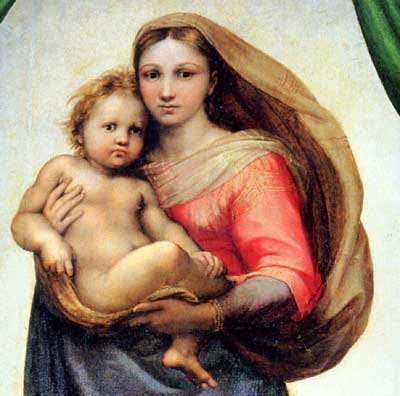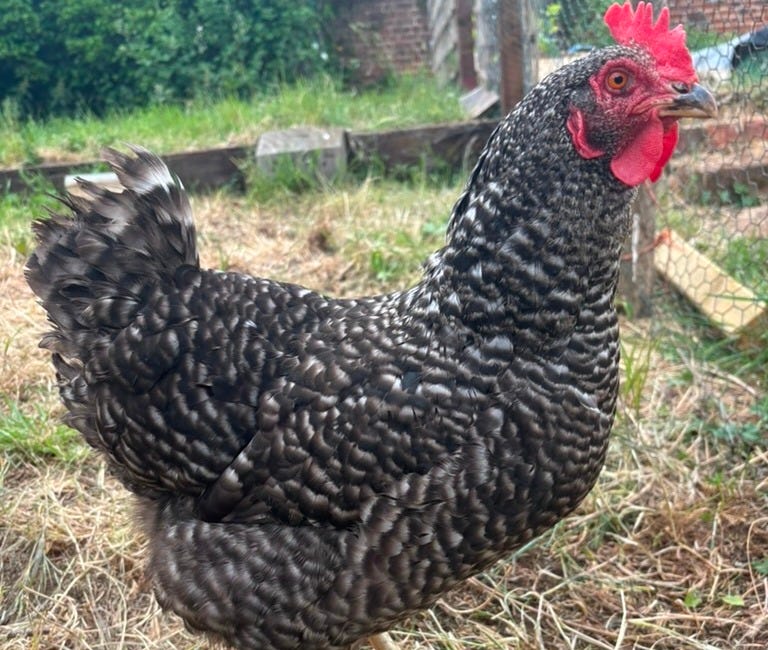What's In The Mother-Shaped Blind Spot?
Remarks at St Dominic's Priory, London, Wednesday 15 October
Longstanding readers may remember a guest post on this Substack last year, by Sr Carino Hodder of the Dominican Sisters of St Joseph, in which Sr Carino argued that “reactionary feminism” and Christian anthropology can challenge one another in fruitful ways. Her case is subtler than “your ideas are basically good, but would be better if they were more Catholic” and I encourage you to read the essay yourself:
Guest post: The Christian Challenge to Reactionary Feminism
Not long ago I published an essay testing the limits of reactionary feminism, by Stella Tsantekidou, from the perspective of non-elite women who don’t inhabit the high-tech, cyborg world to which most of my work addresses itself. Today I’m pleased to publish another piece testing those limits, this time from the perspective of Christian faith, by Catholic religious siste…
Anyway, I’ve met Sr Carino a few times since and found her as smart and thoughtful in person as she is in writing, and also unexpectedly funny, and delightful company. So I was pleased, as well as surprised, to be invited by St Dominic’s Priory in London to give a response to Sr Carino’s Rosary Shrine Lecture earlier this week, on the theme of Our Lady: Preacher of Human Dignity.
I can’t remember the last time I felt so underqualified as a respondent, than in being asked to follow Sr Carino’s reflections on the role of women in the world and in Christian faith, on physical and spiritual motherhood, on Catholic catechism, and much else besides. I gather it’ll be on YouTube in due course. But while I was thinking about how to meet this, it struck me that this offered a great opportunity to come at two challenges that have always been central to the public writing I’ve done so far, which first brought me into contact with Sr Carino.
Firstly, this was an opportunity to try a different lens on a central preoccupation of my work: the “mother-shaped blind spot” that began my enquiry into liberal feminism, back when I had a baby nine years ago. And secondly, by virtue of its maximally Catholic setting this invitation offered an opportunity to address the mother-shaped blind spot with a temporary exemption from what I think of as the “no Aquinas” rule of public writing.
I’m not claiming there is actually an unspoken ban on writing about, or citing, St Thomas Aquinas in lay journalism. But I’ve learned from experience that in mainstream outlets, anything that smells too strongly of Christian thought, and especially pre-Reformation Christian thought, needs to be lightly touched on and heavily footnoted. Nowhere is this more pronounced than in arguments that trespass on territory associated with medieval scholastic metaphysics, and especially on the core Thomist assumption that all things in the world both have a nature, and are also directed.
There are historic reasons for this, as I’ve discussed here, even if we’ve now mostly forgotten them:
The AI Pork Prism
This famous copypasta captures something I have spent years struggling to find words for: the intuition that there is something violent in the destruction of a thing’s inherent form. But there are many assumptions already at work here: not least the intuition that there’s even such a thing
And yet most people still “get” the argument intuitively, as long as you confine it to non-human creatures. Chickens, for example: no problem.
The Nature of Chickens
This comes belatedly to you from Boston, where I’ve arrived (improbably via San Francisco) to teach the annual The Machine Has No Tradition seminar. It’s lovely to visit the USA, but travel scrambles the schedule! With due apologies for the delay, what follows continues recent reflections on how we shape practices of work and attention, or have them shaped for us, in relation to the prevailing technological and philosophical environment.
But when you say “okay, now do the nature of humans” the gears start grinding. You need more words; it gets political. People start to accuse you of “god-bothering” and all kinds of other thought-crimes. This is what I mean by the “No Aquinas” rule.
In turn, this is a core contributor to the mother-shaped blind spot, because if you dispute human nature and directedness on principle, how are you supposed to explain what is distinctive about the relationship of a mother to her baby? You can, more or less, but you have to go round the houses with evolutionary biology and statistics and reams of personal anecdote and so many words. Sr Carino’s argument last year, if I understood her correctly, is that even when you do this the picture is - from a Christian perspective - still incomplete until you add the gift of grace, in helping us live up to our own nature and directedness.
Bracketing the question of grace, just for now, and zooming out, it should be clear that when you deny nature and directedness altogether, for humans, what you get is the version of selfhood that so bewildered me when I first got pregnant. We might call this a Newtonian anthropology, on the model of Newton’s atoms, as he described them in Opticks: “solid, massy, hard, impenetrable, movable particles”. In other words, that people exist as clearly-defined units of subjectivity that orbit one another in patterns, but are always, fundamentally, separate and separable.
Pregnancy really doesn’t compute, in this model. In turn, the Newtonian view of selves makes it generally difficult to see mothers, or to fear that being a mother makes us less then fully human, because we no longer fit the Newtonian template. In turn, this is how you get they/thems on Tiktok worrying that Taylor Swift singing about motherhood is somehow “misogynistic”. Or you get the belief Helen Roy beautifully challenged this week, that motherhood “ruins your body”:
If you assume that humans are atoms with no nature or directedness, motherhood will show up as a “ruined body” and - worse - as a demotion from fully human. Given that more women than not become mothers, the logical inference is that most women are already not fully human – in my reading, a perverse not to mention definitionally misogynistic assertion and thus a puzzling one to find at the heart of self-styled feminism.
But there’s more! Because babies are also not really selves in the Newtonian sense: a newborn baby can’t survive on its own, let alone reason unaided. And yet my daughter’s personality was already evident when she was a tiny baby. How, then, do you explain to people that children are both always, already entirely themselves, while also needing the guidance and care of adults to become what they are? Again: under the “No Aquinas” rule, without nature and directedness, formal and final cause, this case is difficult to make. In turn this has real-world consequences not just for what it means to become a mother or father, but in thinking through our obligations when we do. Should we just get out of the way, as our children self-actualise? Should we let them choose their own bedtimes, or genders? Or is there perhaps a bit more to it?
(Narrator: there’s a bit more to it.)
Whatt makes these nested questions so difficult to parse, is that the answer is less a fixed formula than a story. Children have a nature and a normal developmental arc, and that in turn means what they need from the adults who care for them – and particularly, from infancy to puberty, from their mothers – also changes over time. This story forms the content of the mother-shaped blind spot. That set of changing relationships, over time, and what it means to inhabit those without ever forgetting that we’re not taking about things but people: a baby that’s fully human from the start, however dependent their beginnings, and also a mother who also remains fully human no matter how maternally preoccupied.
::TRIGGER WARNING:: in the unlikely event that I still have any readers who are dogmatically anti-Christian, you may wish to click away now. What follows is in cheerful and flagrant breach of pretty much every aspect of the “no Aquinas” rule, including the convention that overtly Christian themes must be heavily footnoted and presented in a spirit of deep embarrassment. This is the last footnote, so read on at your peril.
As I’m reasonably confident that remarks delivered in the Rosary Shrine at St Dominic’s Priory are exempt from the No Aquinas rule, I’m going to take full advantage of that, and also of our surroundings here. I want to suggest that the Rosary itself, in particular the five Joyful Mysteries, presents a version of that relational story of motherhood and infant development, so comprehensively erased by our Newtonian anthropology.
Importantly, it’s a version of that narrative in which the themes of interdependence and personhood play a central role - along with the insight that mothering is not a fixed state but a pathway. Each of the Joyful Mysteries, five vignettes from just before Jesus’ conception to his adolescence, shows a distinct point on that path. Each of them speaks to a particular maternal relation, and the ongoing story of growing up, but also to the fully formed personhood of the child. And, at every point, to the equally irreducible personhood of the mother.
Keep reading with a 7-day free trial
Subscribe to Mary Harrington to keep reading this post and get 7 days of free access to the full post archives.






